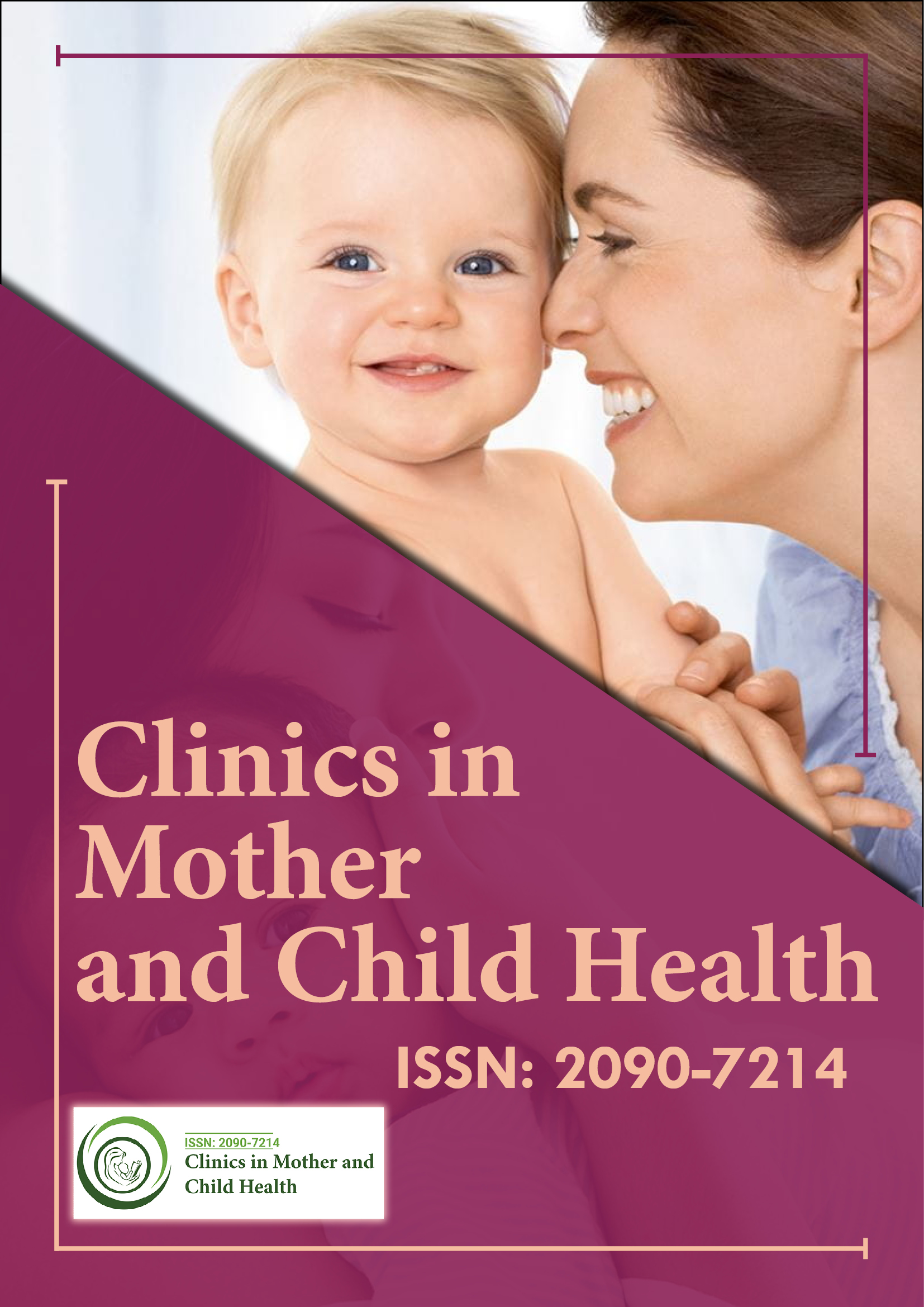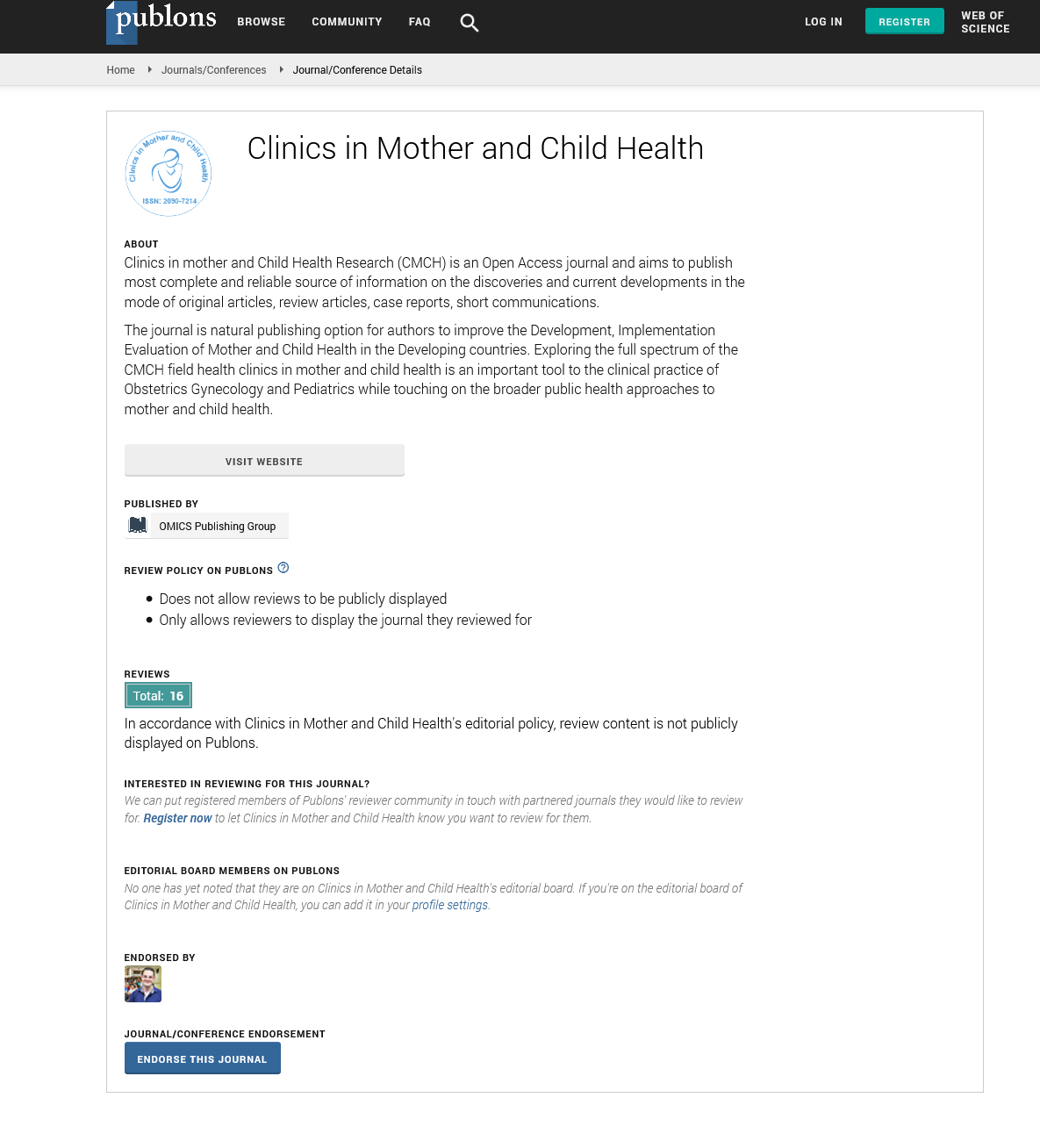Indexed In
- Genamics JournalSeek
- RefSeek
- Hamdard University
- EBSCO A-Z
- Publons
- Geneva Foundation for Medical Education and Research
- Euro Pub
- Google Scholar
Useful Links
Share This Page
Journal Flyer

Open Access Journals
- Agri and Aquaculture
- Biochemistry
- Bioinformatics & Systems Biology
- Business & Management
- Chemistry
- Clinical Sciences
- Engineering
- Food & Nutrition
- General Science
- Genetics & Molecular Biology
- Immunology & Microbiology
- Medical Sciences
- Neuroscience & Psychology
- Nursing & Health Care
- Pharmaceutical Sciences
Commentary - (2024) Volume 21, Issue 6
Preventive Care for Unexpected Preterm Births in Low-Risk Women
Bont Orcesi*Received: 28-Oct-2024, Manuscript No. CMCH-24-27502; Editor assigned: 30-Oct-2024, Pre QC No. CMCH-24-27502 (PQ); Reviewed: 13-Nov-2024, QC No. CMCH-24-27502; Revised: 20-Nov-2024, Manuscript No. CMCH-24-27502 (R); Published: 27-Nov-2024, DOI: 10.35248/2090-7214.24.21.501
Description
Preterm birth, defined as delivery before 37 weeks of gestation, remains a significant public health issue worldwide. It is associated with increased risks of neonatal complications, longterm health concerns and in severe cases, mortality. While much research focuses on high-risk populations, preterm births also occur in women with no apparent risk factors, a group commonly referred to as low-risk women. Despite the relatively low perceived risk, preterm birth still impacts this population, raising questions about causative factors and how best to prevent or manage early labor in these cases. This article describes the complexities of preterm birth in low-risk women, examining potential causes, risk factors, health implications and preventive approaches.
Preterm birth affects approximately 10% of pregnancies globally, with variations in rates across different countries and healthcare settings. Historically, much focus has been on high-risk groups, such as women with previous preterm births, multiple gestations, or significant medical conditions like diabetes and hypertension. However, studies show that a notable percentage of preterm births occur in low-risk women who lack these obvious risk factors. Understanding why this phenomenon occurs is essential for creating preventive strategies that could help reduce preterm birth rates in the general population. Low-risk women who experience preterm labor often face unexpected complications and the unpredictability of these cases makes preterm birth challenging to manage. Further investigation into underlying factors could offer insights that would benefit both healthcare providers and expectant mothers, enabling earlier identification of preterm labor signs and more effective preventive measures.
The causes of preterm birth in low-risk women are often complex and multifactorial. Although these women lack traditional medical risk factors, certain biological, environmental and lifestyle-related influences may play a role. Research suggests that genetics may influence the timing of birth. In some cases, a family history of preterm birth may increase the risk for otherwise low-risk women. Certain genetic markers have been associated with preterm labor and ongoing research continues to examine how genetic predispositions may affect pregnancy outcomes.
Additionally, uterine or cervical abnormalities, even when undiagnosed, can contribute to preterm birth. Conditions such as an abnormally shaped uterus or cervical insufficiency may be undetected in low-risk women yet lead to early labor. Infections, particularly bacterial vaginosis, have also been linked to preterm birth, as infections can trigger an inflammatory response, leading to early labor. Although low-risk women do not typically engage in high-risk behaviors, certain lifestyle factors could still increase the chances of preterm birth. Physical activity, diet and stress levels can influence pregnancy duration. High stress levels, in particular, have been associated with hormonal changes that may trigger early contractions. Socioeconomic factors may also impact pregnancy outcomes in subtle ways, even among low-risk women, with stress and environmental exposures playing contributory roles.
Exposure to environmental toxins, such as pollutants, chemicals and heavy metals, is increasingly seen as a factor that could impact maternal and fetal health. Living in highly polluted areas or being exposed to harmful chemicals at work can increase the risk of preterm labor, even for women considered low-risk by traditional standards. Although low-risk pregnancies generally include healthy women with no major medical issues, age remains a factor. Advanced maternal age (over 35 years) is associated with a slight increase in preterm birth risk, even in the absence of other medical complications. The same is true for women under 18, who may face a higher risk of preterm labor due to biological immaturity. First-time pregnancies are also somewhat more vulnerable to preterm birth, as the body is undergoing these changes for the first time.
Hormonal shifts during pregnancy are necessary for fetal development, but imbalances can contribute to preterm labor. Low progesterone levels, for example, are associated with an increased likelihood of preterm birth, as progesterone plays a role in maintaining uterine relaxation and preventing contractions. Immune responses can also impact preterm birth risk. Certain immune reactions to infections or inflammation can increase the chance of early labor, suggesting that the immune system may be a contributing factor. The health implications of preterm birth are profound, especially for infants. Preterm infants are at risk for a range of health issues, including respiratory distress, low birth weight, jaundice and feeding difficulties. For mothers who are low-risk, an unexpected preterm birth can lead to emotional distress and anxiety, as the outcome deviates from their anticipated low-risk pregnancy. Long-term health consequences for preterm infants can include developmental delays, cognitive challenges and chronic health issues, which place additional emotional and financial burdens on families.
Citation: Orcesi B (2024). Preventive Care for Unexpected Preterm Births in Low-Risk Women. Clinics Mother Child Health. 21:503.
Copyright: © 2024 Orcesi B. This is an open-access article distributed under the terms of the Creative Commons Attribution License, which permits unrestricted use, distribution, and reproduction in any medium, provided the original author and source are credited.

